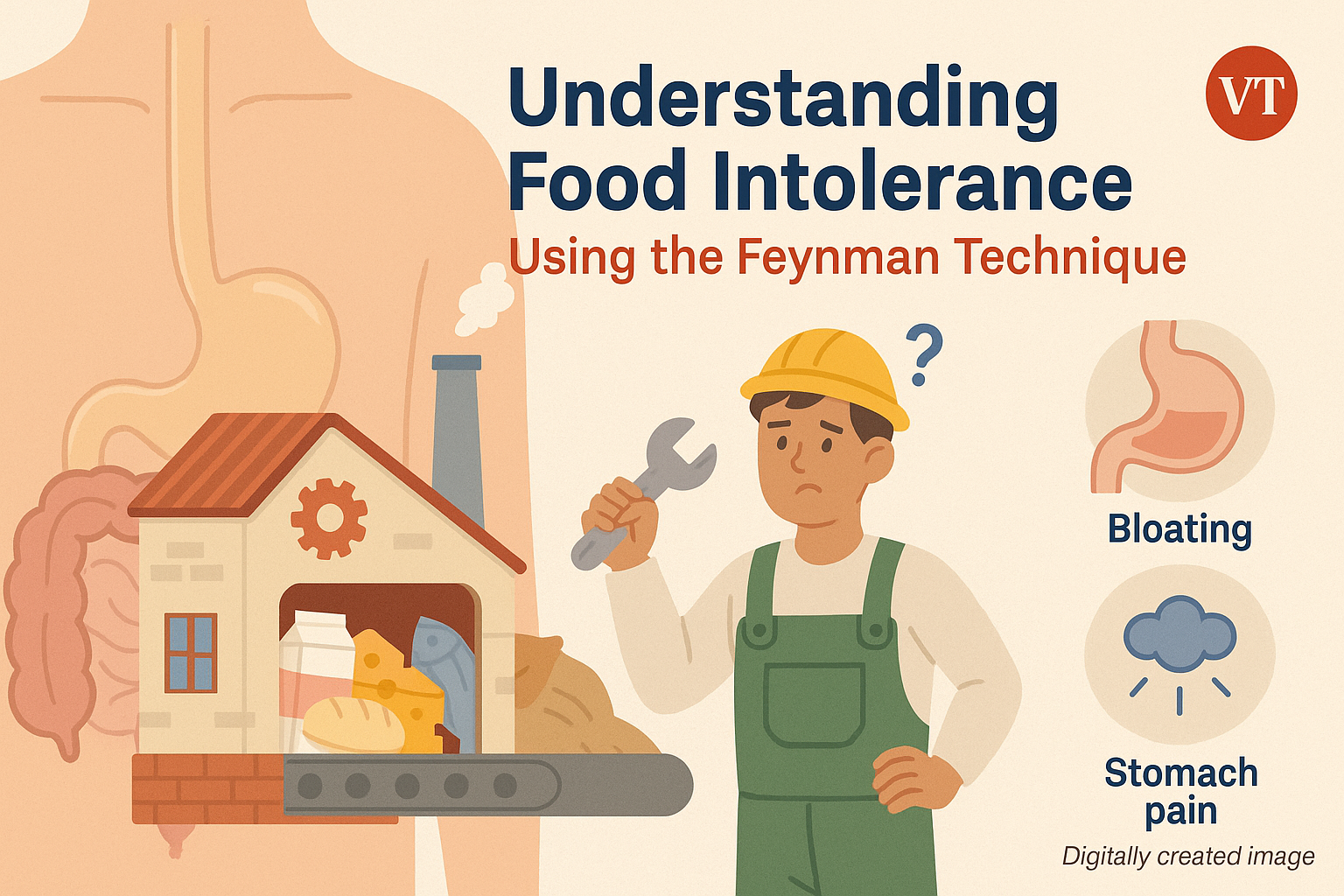Highlights:
- Food intolerance is a digestive issue, not an immune reaction like a food allergy.
- The Feynman Technique helps explain complex topics in simple language.
- Common symptoms include gas, bloating, cramps, and diarrhea.
- Using analogies like a factory or missing tools makes the concept clearer.
- This article aims to break down food intolerance in a way anyone can understand.
Many people feel sick or uncomfortable after eating certain foods, but it’s not always because of a food allergy. More often, the cause is something called food intolerance—a condition that affects digestion, not immunity.
To explain this in the clearest way possible, we’ll apply the Feynman Technique, a method developed by Nobel Prize-winning physicist Richard Feynman. The goal is simple: if you truly understand something, you should be able to explain it so clearly that even a 12-year-old can understand.
📘 Step 1: Teach It Simply
Imagine your body is a factory. Every time you eat, food goes through this factory and gets broken down by special workers called enzymes. These workers turn food into small, usable parts.
But if your body doesn’t have the right enzyme—or enough of it—the food just sits there. It doesn’t get processed properly. That’s what happens in a food intolerance. The result? Gas, bloating, stomach pain, or diarrhea.
This is different from a food allergy. An allergy means your immune system attacks the food as if it’s dangerous. Intolerance means your body simply can’t digest it well—but there’s no immune response.
🔍 Step 2: Find the Gaps
So what exactly causes food intolerance? Common reasons include:
- Missing enzymes – e.g., lactase for digesting milk
- Sensitivity to natural chemicals – like caffeine or histamines
- Reactions to food additives – such as sulfites or MSG
- Poor absorption of carbohydrates – like FODMAPs found in beans and some fruits
Symptoms typically show up gradually and often hours after eating, which can make them harder to trace than allergic reactions.
🔧 Step 3: Simplify Using Analogies
Let’s return to our factory analogy. Think of each type of food as a different puzzle. Your body needs the right piece—or tool—to solve that puzzle. For example:
- Milk needs the enzyme lactase to digest lactose.
- Wheat (in people with sensitivities) needs a set of coordinated enzymes.
If the tool is missing or the workers are under-equipped, the food doesn’t get handled correctly. It sits there too long, ferments, or irritates your digestive system. That’s when the bloating, cramping, and discomfort begin.
🔁 Step 4: Review and Re-Teach
Here’s how we might now explain food intolerance to a 12-year-old:
💡 Final Thought
The Feynman Technique reminds us that true understanding means being able to teach a concept in the simplest terms. When it comes to food intolerance, breaking it down into relatable ideas—like factories, missing tools, and gentle explanations—can help people recognize the condition and seek proper support.
If you regularly experience bloating, gas, or other digestive issues after eating, it might be worth exploring whether you have a food intolerance. Keeping a food journal or speaking to a healthcare professional can help.
*This article is for educational purposes only and does not constitute medical advice. Please consult a qualified healthcare provider for personalized care.*
A global media for the latest news, entertainment, music fashion, and more.















